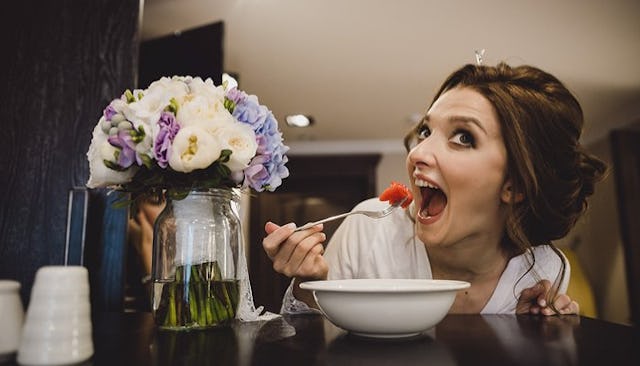There's No Iron Benefit From Eating Placenta So Maybe Everyone Can Stop It Now

Study finds placentas are not, in fact, a good source of iron
For years now, there has been a trend of women eating their placentas after giving birth. Fans of the practice (known as placentophagia because “phagia” is the sound you make when you vomit) claim that it can prevent post-partum depression, increase milk production, and provide a source of nutrition for new mothers. A new study from UNLV, however, claims that when it comes to iron, women receive no benefit from eating their placentas.
Put down your placenta shake, Martha, and eat some goddamn spinach, please.
Iron deficiencies can be a problem during pregnancy and after childbirth, and most women are advised to take an iron supplement to deal with that. But fans of placentophagia claim that the placenta is so high in iron that eating it can eliminate the need for a supplement. This study, however, in which some women were given encapsulated placentas and others had beef capsules as placebos, found “significant differences” in iron levels between the two groups over a three-week period after childbirth. They concluded that: “By foregoing other sources, these women are likely not getting the supplemental boost they need to help iron levels rebound to normal levels.”
That’s serious. A postpartum iron deficiency can result in anemia, which can increase postpartum depression and cause “…breathlessness, tiredness, palpitations and maternal infections,” according to the World Health Organization. Iron deficiencies are nothing to play with and should be carefully considered before you put all your eggs in one basket of placenta. Of course, many women who eat their placentas swear by it and say that it helped them recover from childbirth, and that’s great. You do you. But for those of you on the fence, you might want to throw a bit of science onto the “Cons” list. According to Mark Kristal, a behavioral neuroscientist at the University of Buffalo who studies placentophagia, “It’s a New Age phenomenon…Every ten or twenty years people say, ‘We should do this because it’s natural and animals do it.’ But it’s not based on science. It’s a fad.”
Placentophagia was first recorded in the United States in the 1970s when hippies (natch) started doing it. Now, it’s become so popular that women are writing it into their birth plans. You can even buy a placenta cookbook on Amazon if you are so inclined. (It has “25 easy and delicious recipes,” including, “Placenta Pate,” the idea of which makes me want to phagia.) And if it were just a matter of grossness, then we’d say, have at it — to each his own placenta. But the fact is that there could be health risks to relying on your placenta for your post-partum health needs, and it’s important to be aware of them and consult your doctor or midwife about your plans first.
This article was originally published on